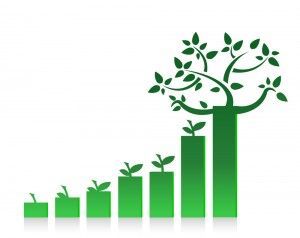Why Sustainable Efforts Benefit Your Business Bottom Line

Sustainability is often represented as
an effort we undertake
, at our own behest and cost, and by pursuing a worthwhile outcome. In some cases, this might be true. For instance, energy-saving bulbs may require a bit of an adjustment when first using them, but the electricity savings are profound. We’re willing to make that difference.
In many cases, however, sustainability in business is often seen as an added cost that may not be worthwhile unless it can serve an operating cost reduction, improve a marketing purpose, or otherwise.
There’s more to business sustainability. Business sustainability strategies offer advantages in liming your spending and those expenditures may not be as expensive as you had thought. If applied correctly, they may even help your bottom line in the best possible context.
With this advice, you’ll be able to move forward and manage a positive result. Let’s see how and why sustainable efforts benefit your business’s bottom line.
Marketing Possibilities & Conscious Consumers
As mentioned above, there’s nothing wrong with marketing your sustainability efforts provided they have substance, and you can prove, transparently, what improvements you’re making. Reducing plastic in your packaging, sponsoring worthwhile causes such as donating to environmental causes, or supporting smaller initiatives by bringing them on as suppliers can make a fantastic case as to why a consumer would choose your business over another. You may be surprised at just how effective this can be in the long run, because the conscious consumer is no longer a niche, but a growing norm of the market.
Sustainability Is Its Own Form Of Innovation
Becoming more sustainable is a means by which you can present new products or value in a better way, even if that original product hasn’t changed. For instance, if you shift your packaging to become completely recyclable, there is a marketing opportunity to engage previous and new customers with this messaging while simultaneously, educating them about sustainability in the process. Of course, you will have provided new value, but as you can see, sustainability can help a business become fresh and present, provided you keep up with the sustainability standards, reporting, and communicating appropriately.
You Can Cost Sustainability Into Your Pricing
In many cases, consumers are happy to pay that little bit extra in order to go for the product that has less impact on the environment. So, while putting up your prices dramatically just because of less plastic use is probably not a good idea, any more stringent efforts can be costed and perhaps made up for slightly. For the most part, consumers will accept this as a good reason to why they should consider a renewed price, especially if it’s subtle. You can use tools such as an amazon repricer to achieve that appropriately-pitched cost in the best terms.
With this advice, we hope you can see how sustainability efforts not only have a limited impact on your bottom line, but can benefit it, or at the very least mitigate the cost of your new efforts.


